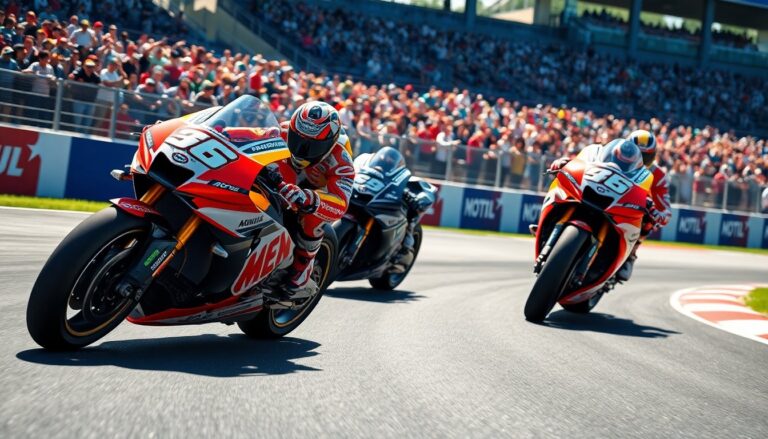Argomenti trattati
The world of motoGP captivates millions globally with its thrilling combination of speed, skill, and advanced technology. As the top tier of motorcycle road racing, motoGP showcases the perfect synergy between state-of-the-art engineering and the exceptional abilities of riders. These athletes continually push the boundaries of both their machines and themselves. This article explores the sport’s history, the innovative technology behind the bikes, and its cultural significance.
History of motoGP
motoGP boasts a rich history that began in 1949. Initially known as the FIM Road Racing World Championship Grand Prix, the competition has undergone significant transformations over the decades. The early years featured smaller bikes and minimal regulations, fostering diverse designs and innovations. As interest in the sport grew, so did the necessity for stricter rules and enhanced safety measures.
The evolution of racing classes
Initially, MotoGP included various classes determined by engine displacement. In 2002, the premier class was rebranded to MotoGP, featuring 990cc four-stroke engines. This shift represented a significant technological advancement, attracting leading manufacturers such as Yamaha, Honda, and Ducati. The regulations changed again in 2012, permitting 1000cc engines, which further enhanced speeds and the overall excitement of the races.
Technological advancements in MotoGP
One of the most intriguing aspects of MotoGP is the impressive technology that powers the bikes. These machines go beyond being mere two-wheeled vehicles; they represent advanced engineering aimed at achieving optimal performance. Each team dedicates millions to research and development, striving for a competitive edge. This investment often leads to innovations that eventually benefit commercial motorcycles.
Key technologies used in MotoGP
Prominent technologies in MotoGP include electronic control systems, traction control, and anti-lock braking systems (ABS). These innovations enable riders to maintain control at high speeds and navigate challenging corners with precision. Additionally, the incorporation of lightweight materials such as carbon fiber and titanium minimizes the overall weight of the bikes, enhancing their agility and speed.
A critical element is the aerodynamics of the bikes. Teams consistently experiment with bodywork designs to reduce drag and enhance downforce, which is essential during high-speed racing. This combination of advanced technologies contributes to making MotoGP an exhilarating spectacle.
Cultural impact of MotoGP
MotoGP represents more than just a sport; it embodies a cultural phenomenon that transcends geographical boundaries. The races draw fans from various backgrounds, fostering a vibrant community united by a shared passion for motorcycle racing. Events occur in iconic locations worldwide, from the streets of Monaco to the circuits of Valencia, attracting thousands of spectators.
Furthermore, MotoGP significantly influences popular culture, inspiring a range of films, documentaries, and video games. The sport’s icons, including Valentino Rossi and Marc Márquez, have become celebrated figures, recognized far beyond the racing community. Their achievements inspire both the next generation of riders and a growing fan base.
The future of MotoGP
MotoGP is currently navigating significant challenges, including sustainability and the need to attract new audiences. The introduction of electric motorcycles and hybrid technologies represents a pivotal shift towards greener racing. The FIM has made a commitment to reducing the environmental impact of the sport, which is essential for maintaining its relevance in an increasingly eco-conscious society.
As MotoGP continues to evolve, it serves as a testament to the spirit of competition and innovation. The series offers a diverse experience for both dedicated fans and newcomers alike, with thrilling races and cutting-edge technology that powers these remarkable machines.

